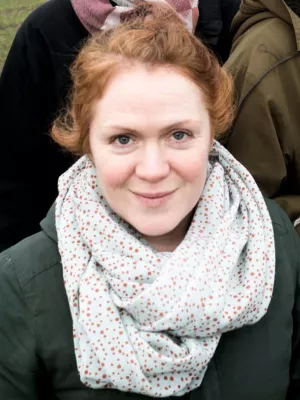
Edith Hammer
Senior lecturer

Habitat geometry in artificial microstructure affects bacterial and fungal growth, interactions, and substrate degradation
Author
Summary, in English
Microhabitat conditions determine the magnitude and speed of microbial processes but have been challenging to investigate. In this study we used microfluidic devices to determine the effect of the spatial distortion of a pore space on fungal and bacterial growth, interactions, and substrate degradation. The devices contained channels differing in bending angles and order. Sharper angles reduced fungal and bacterial biomass, especially when angles were repeated in the same direction. Substrate degradation was only decreased by sharper angles when fungi and bacteria were grown together. Investigation at the cellular scale suggests that this was caused by fungal habitat modification, since hyphae branched in sharp and repeated turns, blocking the dispersal of bacteria and the substrate. Our results demonstrate how the geometry of microstructures can influence microbial activity. This can be transferable to soil pore spaces, where spatial occlusion and microbial feedback on microstructures is thought to explain organic matter stabilization.
Department/s
- Microbial Ecology
- BECC: Biodiversity and Ecosystem services in a Changing Climate
- MEMEG
- NanoLund: Centre for Nanoscience
- Acoustofluidics group
- Department of Biomedical Engineering
- Solid State Physics
- Centre for Environmental and Climate Science (CEC)
Publishing year
2021-12
Language
English
Publication/Series
Communications Biology
Volume
4
Issue
1
Document type
Journal article
Publisher
Nature Publishing Group
Topic
- Microbiology
Status
Published
Research group
- Microbial Ecology
- Acoustofluidics group
ISBN/ISSN/Other
- ISSN: 2399-3642